Extra Words
In preparation for the building of the Mishkan (Tabernacle), an appeal was made to B’nei Yisrael to donate the necessary materials (gold, silver, etc.) from which the portable sanctuary would be fashioned. The response was so generous and overwhelming that a call was issued to desist from any further donations. Referring to the outpouring of plenty, the passuk in this week’s parshah states: וְהַמְּלָאכָה הָיְתָה דַיָּם… וְהוֹתֵר. “And the task (of assembling the materials) yielded enough… and it was extra” (Shemos 36:7).
Speaking of extra, that is exactly what there appears to be in this passuk. After all, if there was more than enough material, there certainly was enough material! Why did the Torah – wherein every word is recorded at a premium – feel it necessary to state that there was “enough” and that it was “extra”? Seemingly, the single adjective “extra” would have conveyed the proper meaning!
Perhaps even more troubling than the redundancy, notes the Chasam Sofer (Toras Moshe), is the fact that these two terms seem to contradict each other! From the word “dayum” – enough – there is an implication of precision; i.e., that there was exactly enough. The word “v’hoseir,” however, means that there was extra material left over. So, which was it: just enough or a surplus?
The Chasam Sofer clarifies the issue with an incredible notion based on the Medrash (Yalkut Shimoni, vol. II, 962). The Medrash quotes a verse from Mishlei and applies it to Moshe Rabbeinu: “‘A loyal man of abundant blessings,’ (Mishlei 28:20) – This refers to Moshe… treasurer/overseer of the Mishkanproject… which experienced expansive blessing in his hand.” The Chasam Sofer understands this to mean that the amassed materials of the Mishkan actually underwent physical expansion: under Moshe’s jurisdiction, they actually propagated themselves, such that the volume of gold and silver and other materials actually increased. This, then, is the meaning of the verse; indeed, both descriptions were true. When amassed, the collection of material was “exactly sufficient” for the Mishkan’s use; but then it grew and became “more than enough.”
As amazing as this may sound, the truth is that this unique characteristic was not limited to the preparation period of the construction of the Mishkan. Rather, it was a pervasive feature of the very structure of the Mikdash, as we shall see.
Money Doesn’t Grow on Trees?
A perfect illustration can be found in the Mishnah in Middos (3:8), which depicts one of the very interesting accoutrements that adorned the Beis Hamikdash:
גֶּפֶן שֶׁל זָהָב הָיְתָה עוֹמֶדֶת עַל פִּתְחוֹ שֶׁל הֵיכָל, וּמֻדְלָה עַל גַּבֵּי כְלוֹנָסוֹת. כָּל מִי שֶׁהוּא מִתְנַדֵּב עָלֶה, אוֹ גַרְגִּיר, אוֹ אֶשְׁכּוֹל, מֵבִיא וְתוֹלֶה בָהּ. אָמַר רַבִּי אֱלִיעֶזֶר בְּרַבִּי צָדוֹק, מַעֲשֶׂה הָיָה, וְנִמְנוּ עָלֶיהָ שְׁלשׁ מֵאוֹת כֹּהֲנִים.
“A vine of gold stood in the entrance to the Sanctuary; it was suspended on poles. Whoever wished to donate either a leaf, grape or cluster (of gold) would bring it and have it attached (to this apparatus). R’ Eliezer ben R’ Tzadok said: Once it happened (that they wished to relocate the vine), three hundred Kohanim were required (to move it, due to its huge volume).”
The Gemara expands on the origins, nature, and purpose of this ornament:
“At the time that Shlomo Hamelech (King Solomon) built the Beis Hamikdash, he had golden forms of all manner of trees crafted into the structure. And when the (actual) trees of the grounds would bear fruit, these golden trees of the interior (one of which was the golden grape vine of the Mishnah) would likewise produce a golden crop. When the wind would blow, the golden fruit would fall from their branches… and provide income for the Kohanim. And once the gentiles invaded the Sanctuary, the golden vegetation shriveled up” (Talmud Bavli, Yoma 39b; Yerushalmi, Yoma 4:4).
Nor was this “living” quality limited to the golden arboretum. The Medrash (Bamidbar Rabbah 11:3) implies that it was universally applicable to all aspects: “Whatever was in the Beis Hamikdash would be fruitful and multiply.” As an example, the Medrash points to the staves of the Aron Kodesh (Holy Ark). These were the poles with which it was carried, and they were fashioned out of wood, overlaid with gold. In describing their entry into the Beis Hamikdash, the passuk states (Melachim I 8:6,8): וַיָּבִאוּ הַכֹּהֲנִים אֶת אֲרוֹן בְּרִית ה’… וַיַּאֲרִכוּ הַבַּדִּים וַיֵּרָאוּ רָאשֵׁי הַבַּדִּים.
“And the Kohanim brought in the Ark of the Covenant of Hashem… and the staves’ were lengthy,’ and their tips were seen to protrude.” This term – וַיַּאֲרִכוּ הַבַּדִּים – could have been understood plainly, meaning that they stood jutting out with their full length. The Medrash interprets differently, however: “The staves became elongated,” referring to the fact that when the implements of the Mikdash were in place, Hashem’s Presence rested therein, and all the various Sanctuary vessels sprung to life (Peirush Maharzu).
While hearing of the wonders that were then in effect may make us wistful, it is worthwhile to cite the conclusion of the Gemara in Yoma (39b). Concerning those trees of gold that went dry at the time of the invasion, the Gemara says: “In the future, Hashem will return them to us; as the verse says (Yeshayah 35:2): ‘It will bloom once again, and rejoice… the glory of the Levanon (term used to refer to the “fertile” quality of the Beis Hamikdash) will be restored.’”







